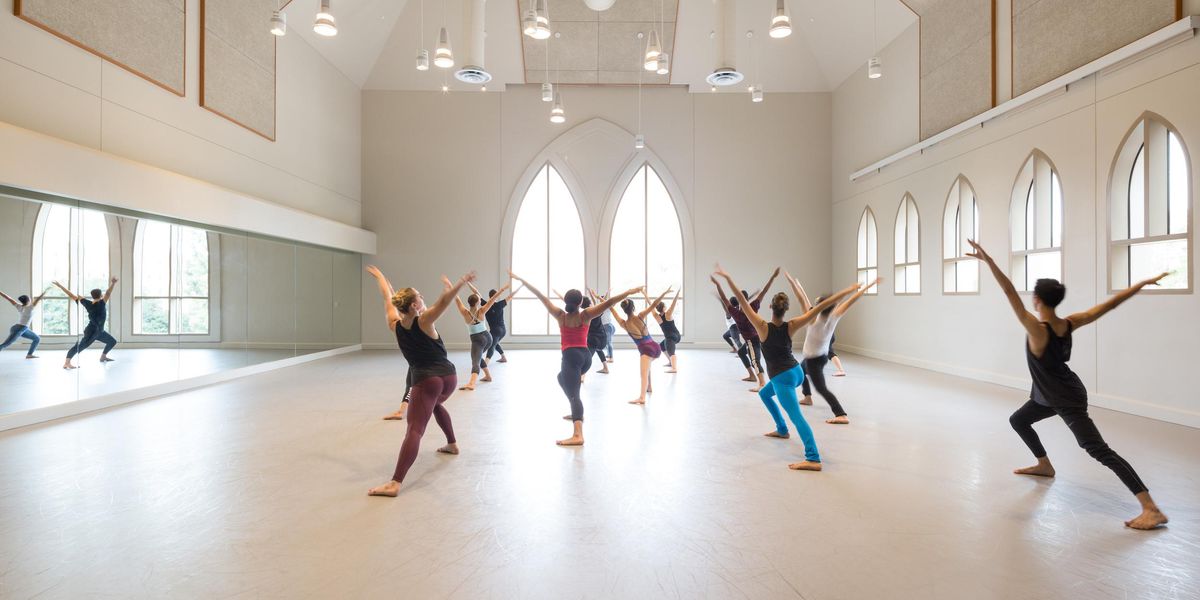Giordano Dance Chicago
Harris Theater for Music and Dance
Chicago, IL
October 26–27, 2012
Performance reviewed: Oct. 26
Many of life’s building blocks—marriages, homes, careers—don’t last 50 years. But Giordano Dance Chicago has not only survived the tribulations of the last half-century, it’s weathered them well.
Though the company moniker no longer includes the word “jazz,” the late Gus Giordano was an early jazz-dance practitioner. And the opening concert of GDC’s 50th-anniversary season was like a primer for jazz dance—a primer that definitely included updates. The seven short, entertaining works on this program, set to pop music of various eras and overseen by artistic director Nan Giordano, made that abundantly clear despite the dance world’s continued blurring of genres.
GDC artistic associate and occasional dancer Autumn Eckman provided the continuity, performing the earliest work on the program and choreographing the latest (her seventh for the company). In Gus Giordano’s 1978 solo Wings, the 34-year-old Eckman was as yearning and powerful as the music: Joan Baez’s rendition of “Swing Low, Sweet Chariot.” Triumphant in her sky-scraping extensions, vulnerable in her poignant reaching, Eckman expertly caught the spiritual heart and jazz classicism of Wings.
Eckman’s funky new G-Force, for two sets of two couples, takes a totally different direction. Set to tracks by grime/dubstep electronica artist Starkey, this octet came closer than any other work on the program to hip-hop: often, after suspending their weight during the music’s syncopations, the dancers dropped it, sliding toward the floor, hips thrust forward in a loping skip. The dancers wore neon blue or green, and Kam Hobbs’ bravura lighting turned their skin into lurid new colors, notably purple and Pepto-Bismol pink. Snatches of text in the music, combined with the dancers’ confrontations, suggested a competition between space aliens.
Lindsey LaFountain and Zachary Heller in Autumn Eckman’s
G-Force.
Photo by Gorman Cook Photography, courtesy GDC.
The remaining repertory works, which spanned the last 13 years, revealed the storytelling potential of jazz dance, which can sketch a plot and characters in record time. Mark Swanhart’s punchy but too-cute 2004 Sidecar, for example, limns a comic nightmare in which the dreamer—complete with superpowers—pursues a woman through throngs of wrong suitors. Company member Lindsey Leduc’s 2009 duet Gravity perfectly echoes the sexy but despairing love affair described in Sara Bareilles’s bittersweet song, “Gravity.” The willowy Meredith Schultz deftly traced the yielding protagonist, while Sean Rozanski was forceful as her nemesis/lover.
Long before Mia Michaels became a judge on So You Think You Can Dance, she created Le Grand Futur Is Here! (1999) for GDC. This story opens with a crowd of exhausted 1930s marathon dancers, numbers pinned to the backs of their costumes, and proceeds through some surreal escapades (including an apparent prison break), perhaps representing the dancers’ hallucinations. Eckman’s 2012 JOLT, whose roots lie in juba, takes the company through the hyper-jitters of a major caffeine buzz (reviewed here), while the 2011 Sabroso, by Del Dominguez and Laura Flores, transports everyone to a slightly wearying Latin dance party. Martin Ortiz Tapia and Maeghan McHale were outstanding—in Sabroso and in many other featured roles.
The GDC dancers gave top-notch performances in impeccably concise, professional choreography. But for me, the very legibility of jazz dance can be an obstacle to engagement. The dancers’ bows—which generally followed from or even extended the stories—were like bows on packages already too neatly wrapped.
Pictured at top: Ashley Rockwood and Martin Ortiz Tapia in
Sabroso by Del Dominguez and Laura Flores. Photo by Kat Fitzgerald/Mystic Images Photography, courtesy GDC.




